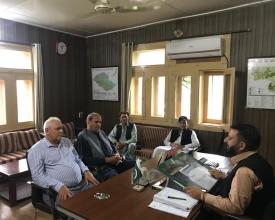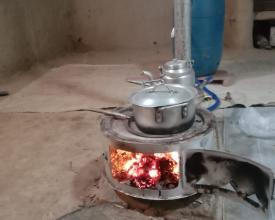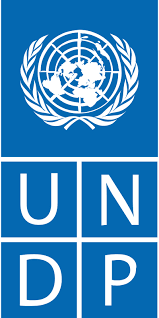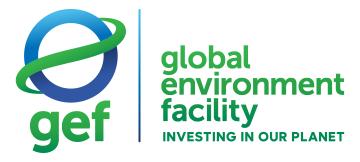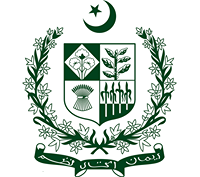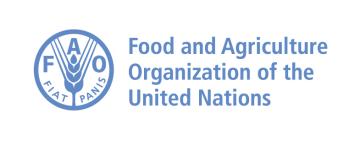
Strengthening and Implementing National and Provincial FLR Policies and Legal Frameworks to Maximize Sustainable Land Management in Chilgoza Forest Ecosystem
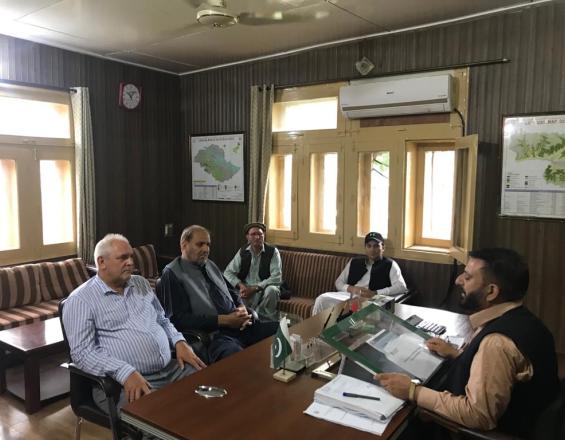
The Restoration Initiative (TRI) in Pakistan has worked to strengthen and implement forest and landscape restoration (FLR) policies and legal frameworks with efforts aimed at maximizing the sustainable land management of the Chilgoza forest ecosystems. To do this, TRI Pakistan facilitated the development of sustainable forest management and landscape restoration frameworks in the four districts of Sherani, Chitral, South West, and Gilgit Baltisan (Diamer), which aim to address forest economic issues, biodiversity conservation and concerns over the key current drivers of forest degradation. These are also based on findings from participatory ROAM assessments that identified restoration opportunities and potential interventions. Additionally, TRI Pakistan reviewed existing policies and helped promote a transition to community-based implementation and the use of innovative and sustainable finance mechanisms such as payment for ecosystems and the use of fuel-efficient stoves.
TRI is a GEF-funded project.
Context
Challenges addressed
One of the biggest challenges that TRI Pakistan faces in achieving its policy and project objectives is the availability of resources. Policy development and especially implementation, requires a lot of resources to ensure all aspects of policies are enacted and enforced. This is partly why the inclusion of local communities is so critical. Private sector actors are one of the main sources of funding and with their buy-in the various policies TRI Pakistan has pursued can be properly approved and implemented. Similarly, political will from the government is critical for the policy changes, as without their willingness to consult stakeholders, the FLR policy process would have remained siloed in the government agencies.
Location
Process
Summary of the process
TRI Pakistan’s work to review policy and regulatory frameworks that promote the use of sustainable financial mechanisms and to help develop sustainable forest management and landscape restoration frameworks in four districts in the Chilgoza Forest comes together to help TRI provide technical input for national policies and help Pakistan’s government implement forest policies with a greater focus on local communities. Through studying financial mechanisms such as payments for ecosystem services and creating an economic valuation study showing the economic worth of restoration in Chilgoza Forest ecosystems, TRI Pakistan was better able to present recommendations on potential interventions and highlight the economic value restoration could bring. With these recommendations incorporated into national policies and implementation measures, Pakistan’s frameworks can become more supportive of FLR. Similarly, with the development of management and restoration frameworks in the four districts, TRI Pakistan is contributing the incorporation of FLR at the subnational level and helping strengthen legal frameworks by ensuring restoration implementation is occurring at the local level with a focus on the priorities and needs of local communities.
Building Blocks
Developing Forest Management and Landscape Restoration Frameworks for Chilgoza Forest Ecosystems
To strengthen Pakistan’s policies and legal frameworks in support of FLR and sustainable land management, TRI Pakistan has facilitated the development of forest management and landscape restoration frameworks for Chilgoza Forest Ecosystems in the four districts of Sherani, Chitral, South West, and Gilgit Baltisan with technical input and hosting and engaging in the consultation of stakeholders. While the Chilgoza Forest Multi-Function Management Plan for the Sherani District has been finalized and a draft for the South West Multi-Function Management Plan has been drafted, the plans for Chitral and Gilgit Baltisan are still under development. The plans are drafted by the respective district’s forest departments and work to address economic concerns, biodiversity conservation, and the key drivers of degradation. The plans are also built on the findings of the participatory ROAM assessments TRI Pakistan conducted, which included key stakeholders from all four project districts and identified restoration opportunities and priority interventions such as more efficient cooking stoves. Ultimately, these plans facilitate the implementation of FLR and sustainable land management at the local level as they are made with input from local stakeholders and outline management measures designed with their communities’ priorities in mind.
Enabling factors
In order to develop these policies in a way that best addresses the needs of the four districts, TRI Pakistan’s ROAM assessments were vital. As a way to ensure hotspots are given priority, properly conducting the assessments was also critical. Pakistan trained forty-four professionals and key stakeholders from all districts on the ROAM methodology to ensure the process was inclusive as possible and effective in identifying priorities to be addressed in the management plans.
Lesson learned
From the development of the four districts’ Chilgoza Forest Multi-Functional Management Plans, TRI Pakistan learned multiple lessons on how forest management should be approached at the local level and how differences in local communities affect the prioritized goals and measures. Beginning with the ROAM assessments, TRI Pakistan was able to see where the districts differed in their prioritized restoration areas, which interventions they pursued, and the overall goals and economic needs of local community groups. From these assessment findings, the respective forest departments, in elaborating the plans, also showed the team how their district context affected the way they approached FLR and sustainable land management. Understanding how the different local communities approach forest management further helped TRI Pakistan facilitate the government’s transition in considering local and private sector perspectives in the implementation of national forest and climate policies.
Reviewing Policy and Regulatory Frameworks to Promote the Use of Innovative and Sustainable Financial Mechanisms
TRI Pakistan reviewed policy and regulatory frameworks to identify, understand, and facilitate the use of innovative and sustainable financial mechanisms such as payment for ecosystems and services and targeted funs at district level for providing incentives for ecosystem services (PES). This includes an initial scoping mission to assess the feasibility of payment for ecosystem services, which includes training 26 participants on ecosystem services valuation, incentives, and PES. This PES scheme was piloted in Chitral with a consultant engaged in studying the various options for generating resources for conservation and sustainable land management of the Chilgoza Forest. TRI Pakistan also produced an economic valuation study of the Chilgoza Forest ecosystem services, which outlined to the government how much economic gain FLR and sustainable land management can provide and pushed decision makers to allocate greater resources to forest restoration. Additionally, TRI Pakistan convened capacity building workshops of hundreds of staff on the use of fuel-efficient stoves and gasifiers. Together, this review allowed TRI Pakistan to learn more about potential FLR interventions and conservation incentives.
Enabling factors
To be able to review frameworks that facilitate the use of innovative and sustainable financial mechanisms, TRI Pakistan needed to train participants on schemes like the payment for ecosystem services and on the use of technology like fuel efficient stoves and gasifiers. With trainings, participants could implement the interventions and provide enough data on their feasibility. Additionally, providing government bodies with an economic valuation study that shows the value of restoration will prove invaluable in pursuing FLR policies.
Lesson learned
Reviewing policy and regulatory frameworks that could promote innovative and sustainable financial mechanisms taught TRI Pakistan about the feasibility of potential interventions to facilitate restoration and sustainable land management in Chilgoza Forest ecosystems. Studying the effects and implementation of payments for ecosystem service as well as the use of fuel-efficient stoves and gasifiers, TRI Pakistan learned how the mechanisms affected restoration and whether they were interventions worth pursuing. Using these findings, the team was able to make better recommendations for policies being elaborated. Additionally, the economic valuation study of the Chilgoza forests ecosystem services provided TRI Pakistan with critical information showing the economic value restoration and sustainable land management could provide for communities. This further allowed TRI Pakistan to provide recommendations and pursue policy development as the study also shows government bodies drafting policy the economic potential of FLR.
Impacts
TRI Pakistan’s work to strengthen policy and legal frameworks on the national and provincial level has resulted in multiple policy changes, including a transition in the implementation of the country’s various policies related to forests such as the National Forest Policy (2015) and the National Climate Change Policy (2021) that focus on a community-based forest management approach and local communities. This is done through local forest protection conservation committees, through which major developments and implementation must pass, and with the development of Chilgoza Forest Multi-Functional Management Plans for the Sherani, Chitral, South West, and Gilgit Baltisan districts, meant to facilitate the implementation of sustainable land management at the district level. This new focus on local communities represents a complete reorientation of the forestry sector in Pakistan in the way the government consults and considers private sector actors and local groups. While the government had previously not consulted other stakeholders at all prior to this new focus, today, implementation and the development of policies now must pass consultations with the various stakeholders implicated in forest management.
Beneficiaries
The beneficiaries include local communities, benefiting from restored ecosystems, private actors now earning more from sustainable land management, and the forest department, which now has greater clarity on how to implement forest policies.
Sustainable Development Goals
Story
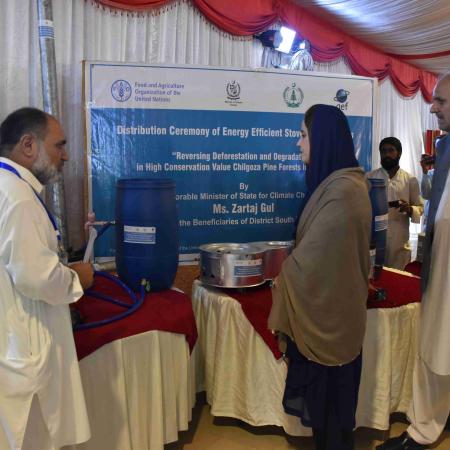
The chilgoza forests, typically either pure stands of chilgoza pine (Pinus gerardiana) or mixed stands with other coniferous species, are native to northern Pakistan and a high-value tree known for its edible pine nuts, which are rich in carbohydrates and proteins. In addition to providing various environmental services, this species plays an important role in the livelihoods of local communities.
Traditionally, in communities’ rights to hold forests, the control of deforestation and forest degradation always remains an issue. The provincial forest departments in selected regions have limited reach, administrative control, and financial, legal and scientific decisions. On the other hand, due to traditional and unsustainable harvesting of NTFPs, existing gaps in the value chain and marketing issues marketing, the communities of high-value forests remain below the poverty line.
To address these issues on the request, FAO launched the project “Reversing Deforestation and Degradation in High Conservation-Value, Chilgoza Pine Forests in Pakistan.” It aims to improve local livelihoods through increased productivity and enhanced services and functions of chilgoza forests. The project aims to restore ecological integrity while improving human well-being through multifunctional landscapes.
Using the FLR approach, four options were identified and prioritized: assisted natural regeneration enclosures, agroforestry and farm forestry, communities’ engagement in conservation and protection, and development of linkages with provincial forest departments, and value chain development of goods and services produced from chilgoza forests.
Wood consumption for fuel and timber and livelihoods plays a role in degradation. To minimize this effect, the project focuses on two types of activities: agroforestry and innovative fuel-efficient technologies. So far, agroforestry interventions have been promoted over 953 ha (in total, 1.12 million plants) to support families dependent on forest services, and 2,100 fuel-efficient stoves and gasifiers, and 6 tonnes of pellets have been provided. In normal conditions, an improved stove consumes 49% less energy than a traditional stove. As such, the 2 100 stoves provided in the last 3 years saved 18 900 trees from ash. Therefore, not only has the fuelwood consumption been reduced, but so has the workload on women and children, while health, hygiene and living standards have improved.

